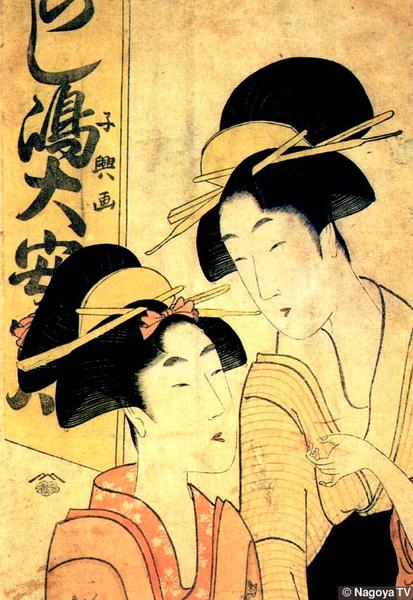| | |
| Artist: | Eishosai Choki (a.1760s-1800s) |
| Title: | Two Women |
| Series: | |
| Date of first edition?: | Not set |
| Publisher (first edition)?: | Not Set |
| Publisher (this edition)?: | Not Set |
| Medium (first edition): | Woodblock |
| Medium (this edition): | Woodblock |
| Format (first edition): | Not Set
|
| Format (this edition): | Not Set |
| DB artwork code: | 28471 |
| Notes (first edition)?: |
|
| Notes (this edition)?: |
| The following information was taken from the original web listing of this artwork. Note that there may be some inaccuracies:
Two Women, by Eishosai Choki (active late 18th century)
Choki was active at almost the same time as Utamaro and was an ukiyo-e artist famous for his depictions of women that were somehow more approachable than those of Utamaro. Not as sensuous as Utamaro's women, prints like this one show images of women you might meet in your own neighborhood. Their bright faces are fascinating. |
|
| Artist Bio: |
栄松斎 長喜(えいしょうさい ちょうき)
生没年未詳
号は栄松斎の他、松亭、百川。
初め長喜と名乗りますが、寛政7年頃に子興と改名し、享和元年頃から再び長喜と称しました。
天明年間末期から文化年間中期にかけて黄表紙や咄本、読本、洒落本、合巻、狂歌本等版本の挿絵を多く描き、 錦絵では美人画を中心に、役者絵や武者絵、花鳥画、相撲絵等を描きました。
寛政3年から7年頃までの長喜時代に描かれた作品の評価が高く、面長でおだやかな容貌を持つ独特な美人像で主要な錦絵作品を描いています。
この頃の代表作には「なにはや店先」、「善玉悪玉青楼遊興図」、「青楼俄全盛遊」、「四季の美人」、「青楼後朝雨」、「青楼美人合」等があります。 |
|


